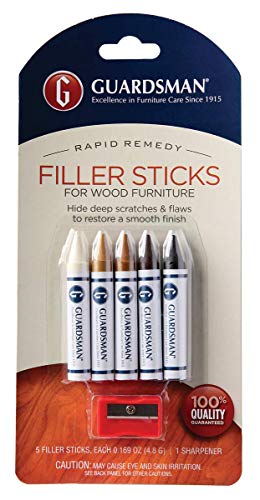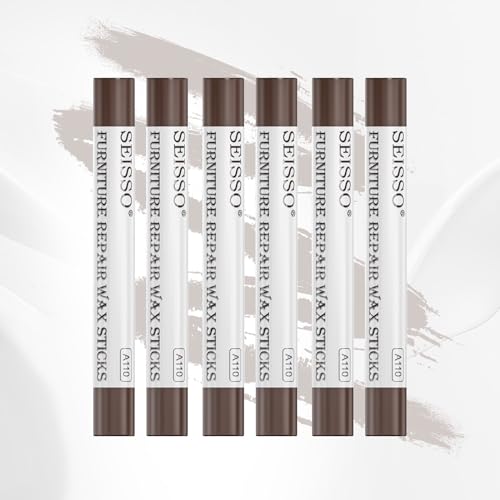The Handy Man’s Guide to Choosing the Best Wood Floor Color for Your Home
Are you looking to enhance the beauty of your home with the perfect wood floor color? As a handy man who is good at fixing things, you understand the importance of attention to detail, and the color of your wood floor is no exception.
Choosing the right wood floor color can significantly enhance the style and functionality of your home, and it can be challenging to know where to start. Factors such as room size, natural lighting, and your home’s overall design must be considered.
In this article, we’ll provide you with all the information you need to make the best choice for your home, including a breakdown of popular wood floor colors and their benefits, tips on matching wood floor color with your home’s interior design, and techniques for maintaining and caring for your wood floor to enhance its color and appearance.

So, whether you’re looking to add value to your home or simply improve its aesthetic appeal, keep reading to learn more about the best wood floor color options for you!
Understanding the importance of selecting a color for wood floors.
As a handyman with an eye for detail, you know that choosing the right wood floor color can make all the difference in a home renovation project. The color of your floors sets the tone for your entire space and can completely transform its aesthetic appeal.
When it comes to selecting the best wood floor color, there are several factors to consider. First and foremost is personal preference – what colors do you find most appealing? Do you prefer warm tones like reds and browns or cooler shades like grays and blues?
Another important consideration is how your chosen color will complement existing elements in your space such as furniture, cabinetry, or wall paint. Will it blend harmoniously or create a striking contrast?
It’s also worth considering practicality when selecting a wood floor color. Lighter woods tend to show scratches more easily than darker woods, while darker woods may show dust more prominently.
Ultimately, choosing the best wood floor color involves finding balance between personal taste and practicality while keeping in mind how it will affect overall design aesthetics. With careful consideration of these factors along with professional guidance from flooring experts ,you can be sure to achieve stunning results that enhance both beauty and functionality of any living spaces!
Factors to consider when choosing the best wood floor color include.
When choosing the best wood floor color for your home, there are several factors to consider. First and foremost, you’ll want to take into account the overall aesthetic of your space and how the flooring will fit in with it.
Consider whether you want a light or dark shade of wood. Lighter colors can make a room feel brighter and more spacious, while darker shades can lend an air of sophistication and elegance.
Another important factor is durability. If you have pets or kids running around, you may want to opt for a darker color that hides scratches better than lighter shades.
It’s also important to think about maintenance requirements when selecting your wood floor color. Darker floors often require more upkeep as they show dust and dirt easily whereas light-colored woods need regular cleaning due to visible stains on them.
Finally, don’t forget about resale value! Neutral tones like beige or gray tend to be popular among potential buyers if you’re considering selling in the future!
« brooklyn brownstone renovation
bathroom pendant lighting ideas »
By taking these factors into consideration before making your decision on which flooring option is best suited for use within any given area of one’s home- it will help ensure that not only does everything look great but lasts longer too!
Popular wood floor colors and their benefits.
As a handy man who prides himself on being able to fix anything, you know that the right wood floor color can make all the difference in a room. Not only does it set the tone for your decor, but it also has practical benefits.
One of the most popular wood floor colors is classic natural oak. This timeless choice provides warmth and comfort to any space while remaining versatile enough to work with any style of decor. It also has great durability, making it an ideal choice for high traffic areas like entryways or kitchens.
If you’re looking for something more modern and sophisticated, consider dark espresso or ebony floors which provide a sleek look with their rich brown tones. These darker shades are perfect if you want to create contrast against lighter furniture pieces or bright accent walls.
For those wanting something unique and eye-catching, gray-toned hardwoods have been gaining popularity in recent years due to their versatility and ability to blend seamlessly into contemporary designs. They offer subtle elegance without overpowering other design elements in your space.
No matter which color of wood flooring you choose, there are undeniable benefits beyond just aesthetics. Hardwood floors add value to your home by increasing its resale value while also being easy-to-clean compared with carpets which can harbor allergens and dirt over time.
So whether you’re fixing up an old house or starting from scratch on new construction projects – choosing hardwood flooring isn’t just about looks; it’s about functionality too!
How do I match the color of my wood floor with my home’s interior design?
If you’re a handyman with an eye for design, finding the best wood floor color to match your home’s interior can be a daunting task. Fortunately, there are several strategies that can help you pick the perfect shade.
First, consider the overall style of your home. If you have a modern or minimalist aesthetic, lighter woods like maple or ash may be the way to go. For more traditional homes with darker furniture and accents, hickory or mahogany floors may complement the space better.
Next, think about natural lighting in each room. North-facing rooms tend to get less sunlight and benefit from warmer hues like amber or honey toned woods such as oak or cherry while south-facing rooms do well with cooler shades like grey-toned hardwoods such as birch and bamboo.
Finally – don’t forget to look at existing colors within your space! Consider coordinating wall colors & accent pieces (e.g., curtains) before making final decisions on wood flooring selections!
Regardless of which approach works best for you – remember that selecting just-right tone is key when it comes time finalize any new renovation project!
Maintaining and caring for your wood floor will enhance its color and appearance.
So, you’ve invested in a beautiful wood floor for your home. Congratulations! But now comes the important part: maintaining and caring for it to enhance its color and appearance.
First things first, make sure your wood floor is properly sealed. This will protect it from moisture damage and reduce the likelihood of scratches or dents. If you’re not sure if your floor is sealed, consult with a professional or test it yourself by dropping a small amount of water onto the surface – if beads form on top rather than soaking in, then you’re good to go.
Next up, avoid using harsh chemicals when cleaning your wood floors. Instead opt for gentle cleaners specifically designed for use on hardwood flooring – these can be found at any home improvement store or online retailer.
Another tip? Invest in area rugs and furniture pads to help prevent scratches caused by foot traffic or moving objects. And don’t forget about regular maintenance like sweeping/vacuuming dust and debris off the surface!
Finally, consider re-staining or refinishing your floors every few years (depending on wear-and-tear) to keep them looking their best over time.
By following these simple steps and taking care of your investment properly, you’ll be able to enjoy that gorgeous wood floor color for years to come!
Conclusion
Choosing the best wood floor color for your home isn’t an easy task, but it’s essential to get it right! The good news is that you don’t have to go at it alone. By understanding and considering all of the factors involved in choosing a new wood floor color, such as popular trends, matching with home interiors, and regular maintenance, you can easily find just the right hue for your space. So why not take some time today to assess which shade would be most suitable? And if you need any advice or guidance along the way – don’t forget I’m here help!















